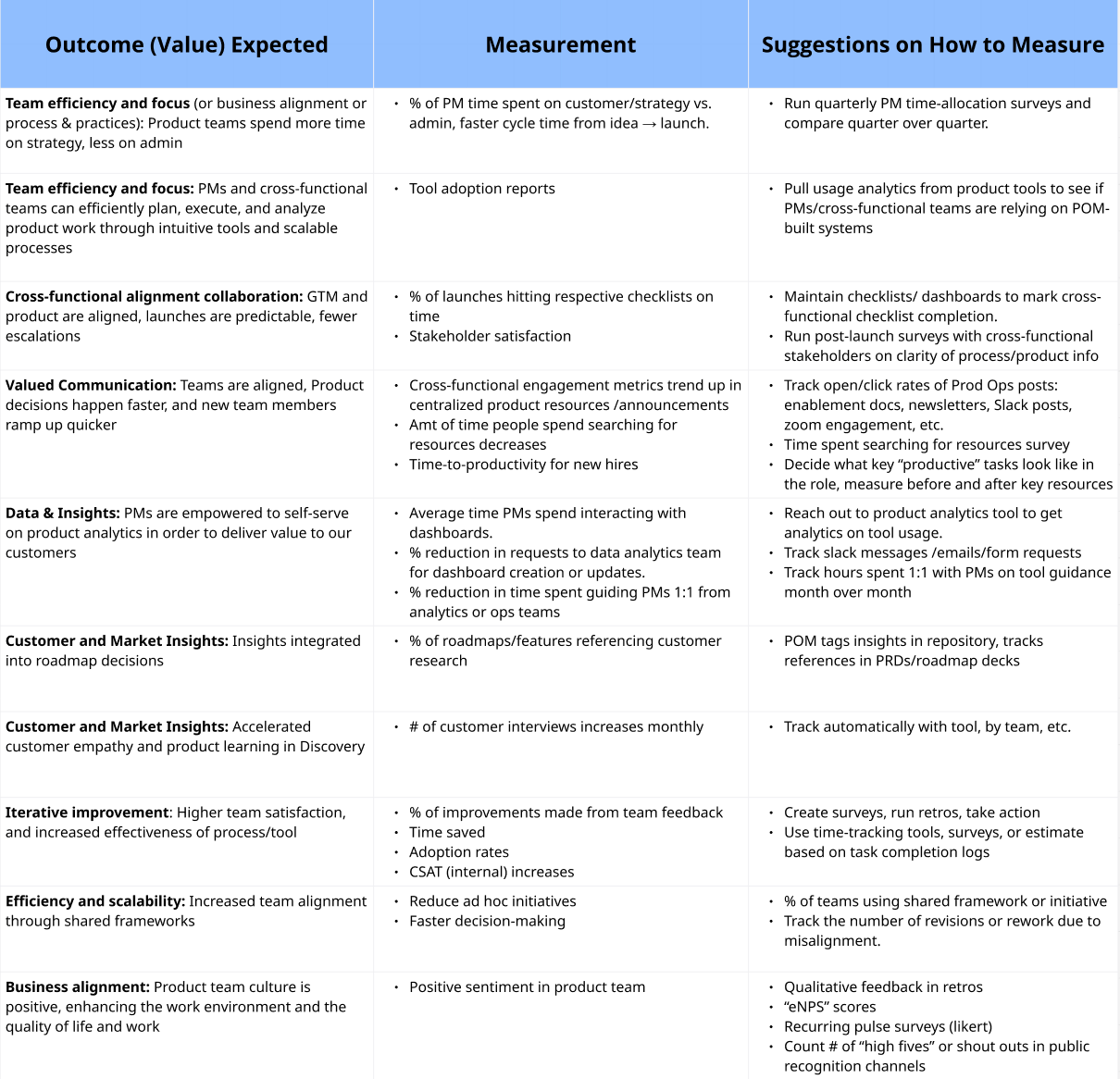Measuring Product Operations - Guest Resource with Jana Debusk
Taking on that classic question with a fresh perspective
“You can’t figure out where to go if you don’t know where you are today.”
Foreword from
: It is a pleasure to partner with Jana Debusk to bring this resource to you (Let’s be honest, Jana did all the work, we’re just publishing!), a resource that will continue to evolve as more and more is learnt about measuring ourselves and our teams in the Product Ops profession.This is a living document.. Jana will update and publish it quarterly, adding new insights and best practices as they emerge.
We encourage you to collaborate, share your experiences, and contribute your ideas (through comments below). Product Operations grows fastest when we tap into our collective knowledge, experiment openly, and learn from each other. Think of this as a shared space to capture what works, what doesn’t, and what’s worth trying next!
Measuring the impact of Prod Ops is hard.
As the “connective tissue,” our work happens in the spaces between teams: aligning people, smoothing processes, connecting data, and creating clarity. Below are a few starting points I’ve gathered for Prod Ops professionals. I have combined resources and gained inspiration from Graham Reed (Product Ops Confidential), Product Operations by Melissa Perri and Denise Tilles, Pendo Resources, Dragonboat, and various “top voices” across the industry like John Cutler, May Wong, Jenny Wanger, and others.
Measurement as a Tool for Growth
Before we get into the details of what to track, let’s talk about how to think about measurement in the first place. Let’s stop thinking of metrics as something to defend and start seeing them as tools that help us learn faster. I think it’s important to look at metrics as “learnings and explorations” as well as “focus, objectives, and alignment”. When teams build learning into their everyday work, metrics become a shared way to see what’s working and where to grow next.
Product Operations Pillars
Prod Ops can have many “pillars”, and they often overlap. You’ll notice several core themes consistently appear. While the language differs, the essence is shared - showing that regardless of background, we’re all solving the same problems from different angles.
Think of the ones I’ve gathered below as guideposts - a starting point for understanding value. Use them as inspiration, then shape and evolve them to fit your unique environment!
Graham Reed (Product Ops Confidential) has pillars:
Valued Communication
Cross-functional Collaboration
Data-informed Decision Making
Strategic Support
Business Alignment
Melissa Perri and Denise Tilles have pillars:
Business Data and Insights
Customer and Market Insights
Process and Practices
Tools
Data
Experimentation
Strategy
Trusted advisor
Jenny Wanger/Mind the Product has pillars:
Using Data
Understanding Users
Team Ownership
Cross-departmental collaboration
Iterative Improvement
Workflows
Integrations
Backlog Management
Processing User Feedback
Cross-team collaboration
Data-driven decisions
High-level Prod Ops Metrics
With those pillars in mind, think of ways you drive/help/facilitate:
Less waste (time, $ or FTE cost)
Faster, more informed decisions (more $ generated)
Experiment success rate (validated learning per experiment)
Reduced cost (faster onboarding, streamlined tooling)
Team health (fostering empowered teams)
Less friction (cross-functional collaboration and communication)
Deep Dive Prod Ops Metrics + How To
Here are some examples collated so far.
Let us know what you think. What do you use? What have you tried that has worked, or not worked?




